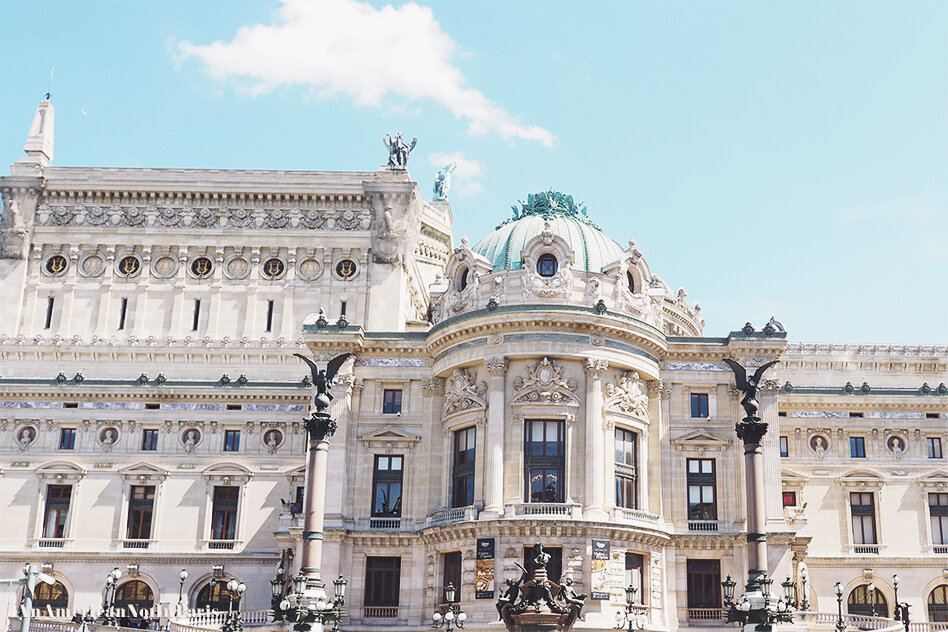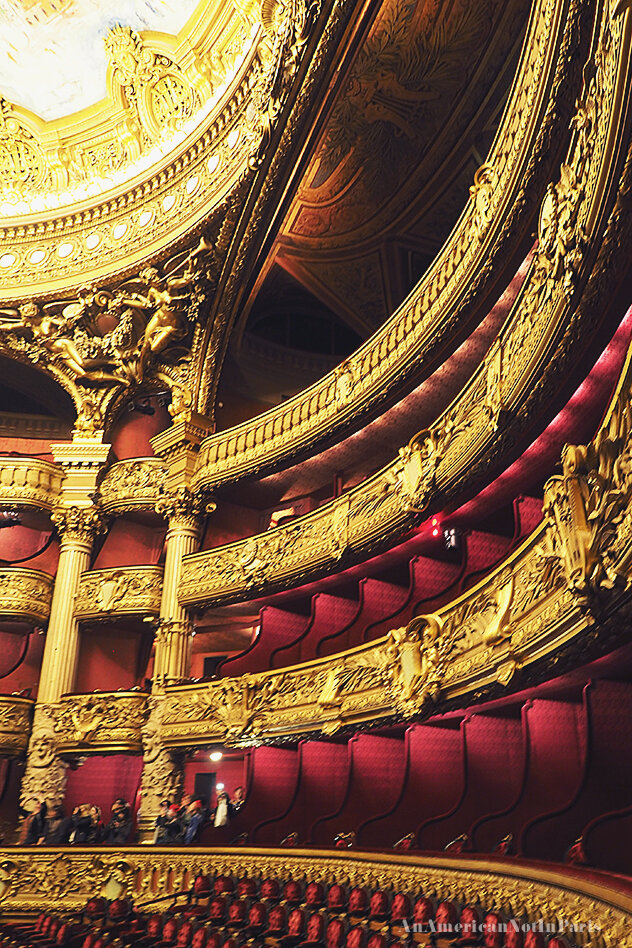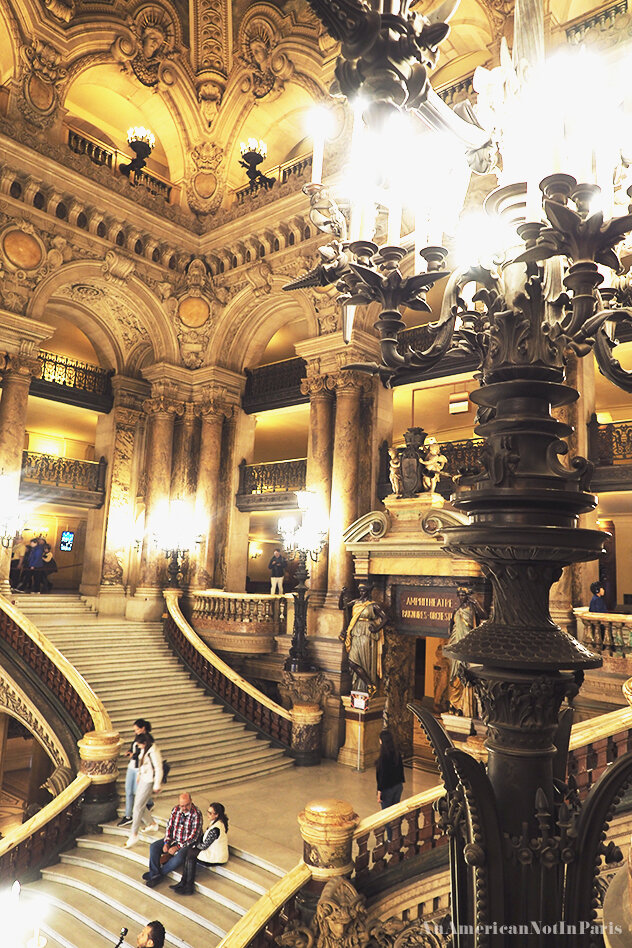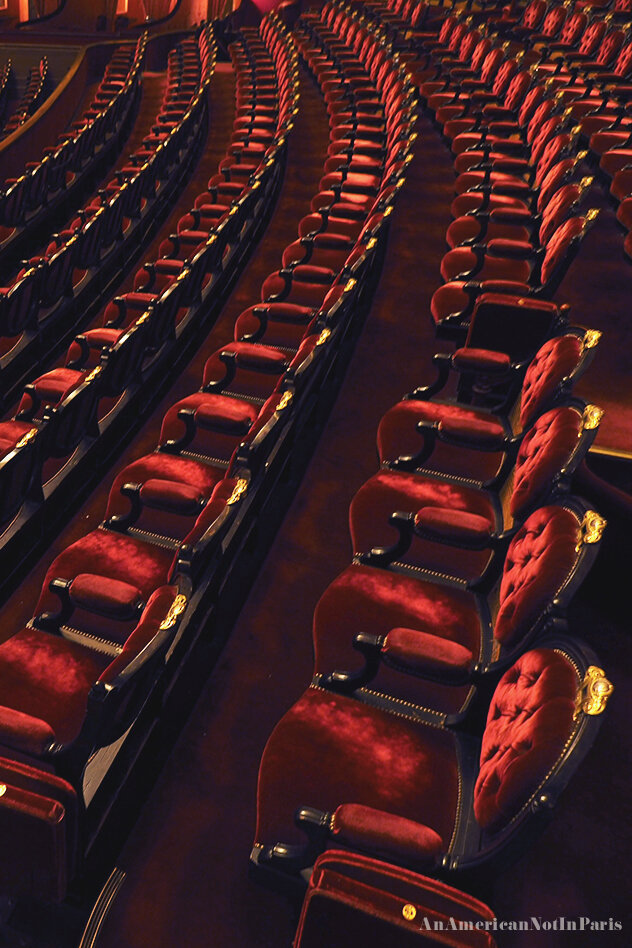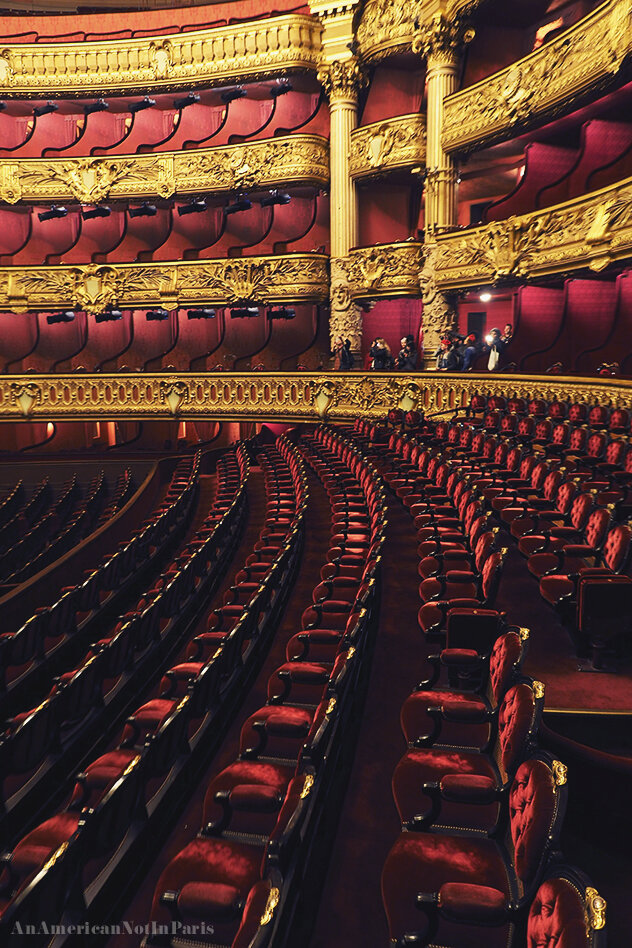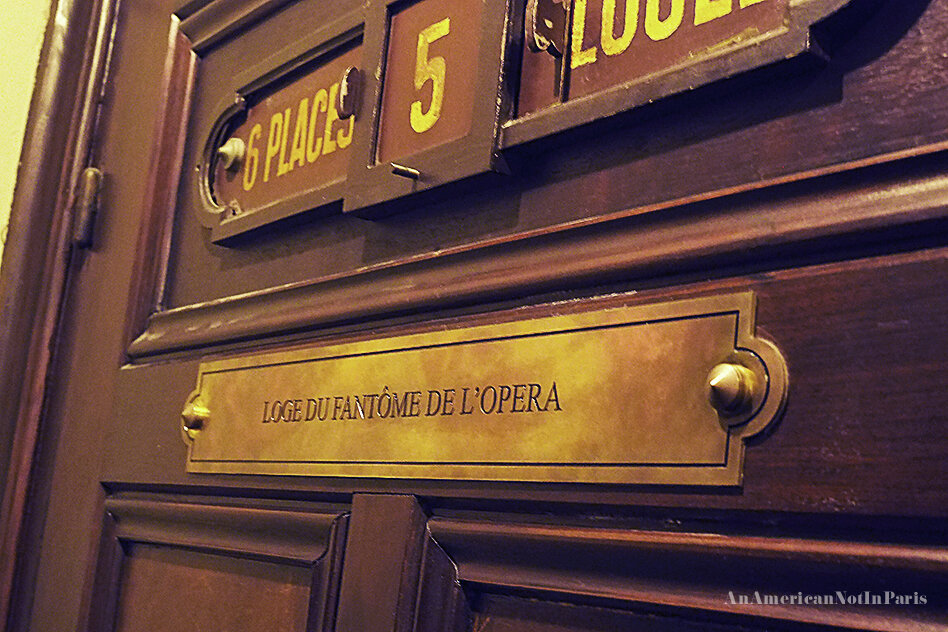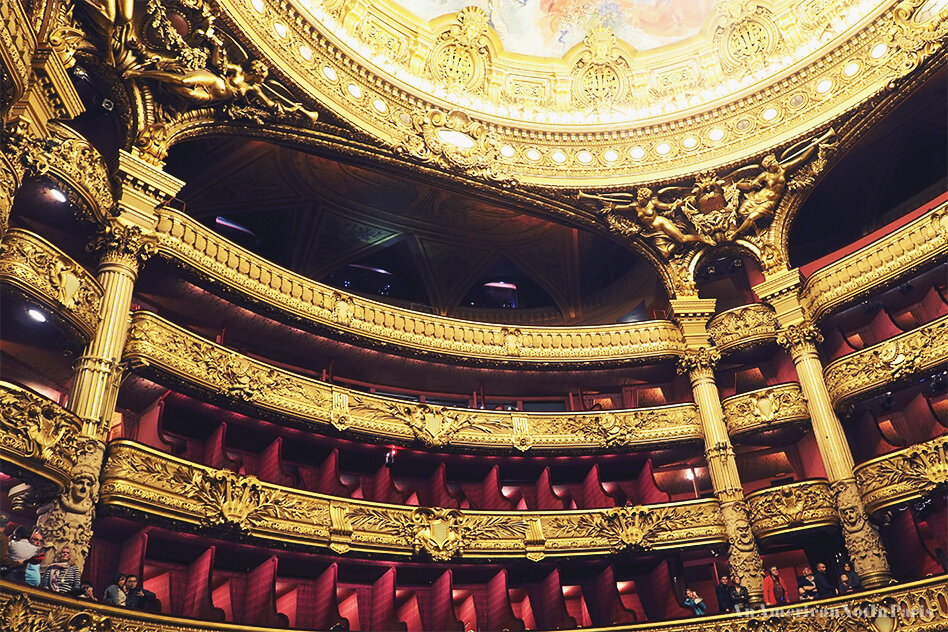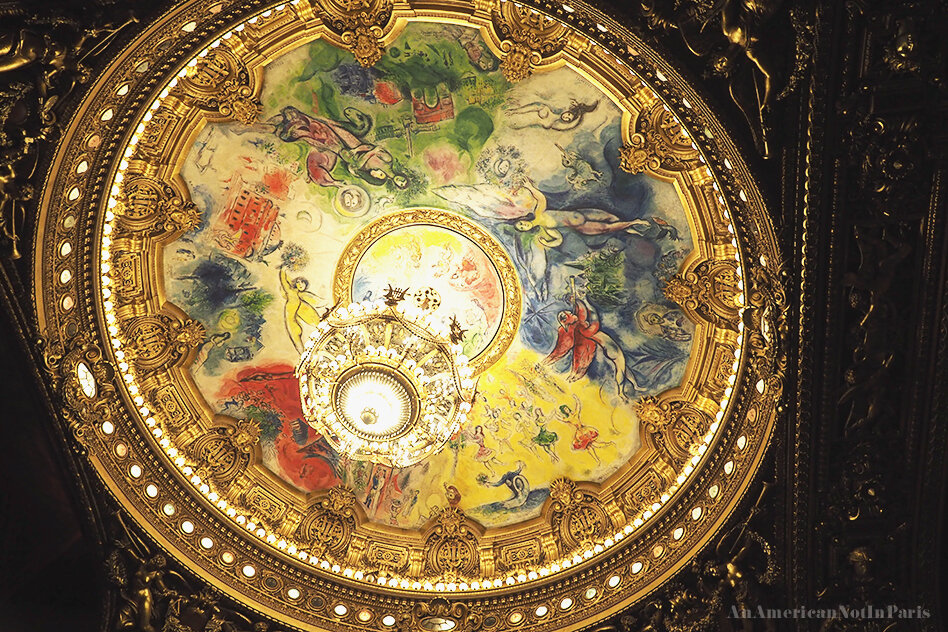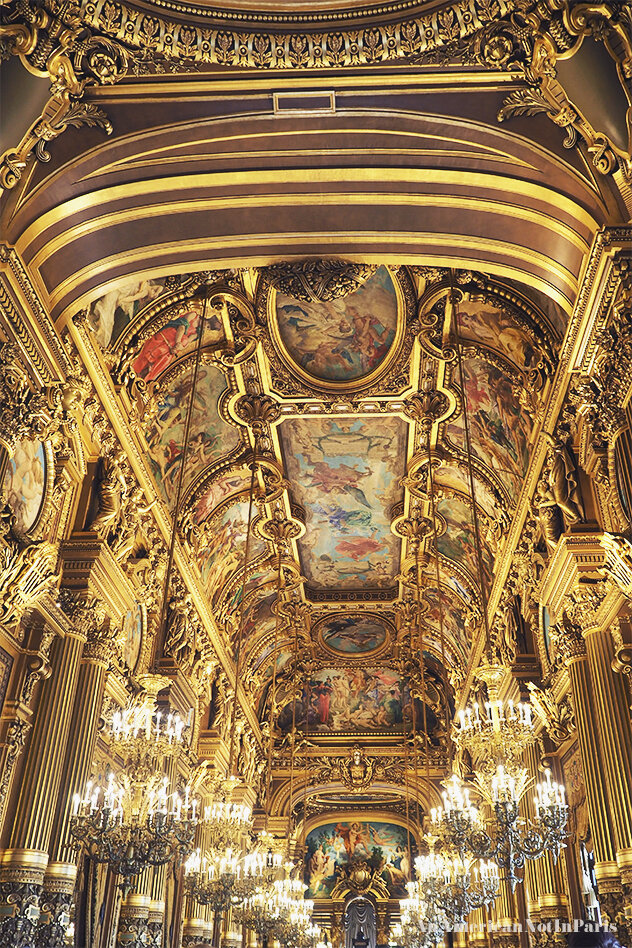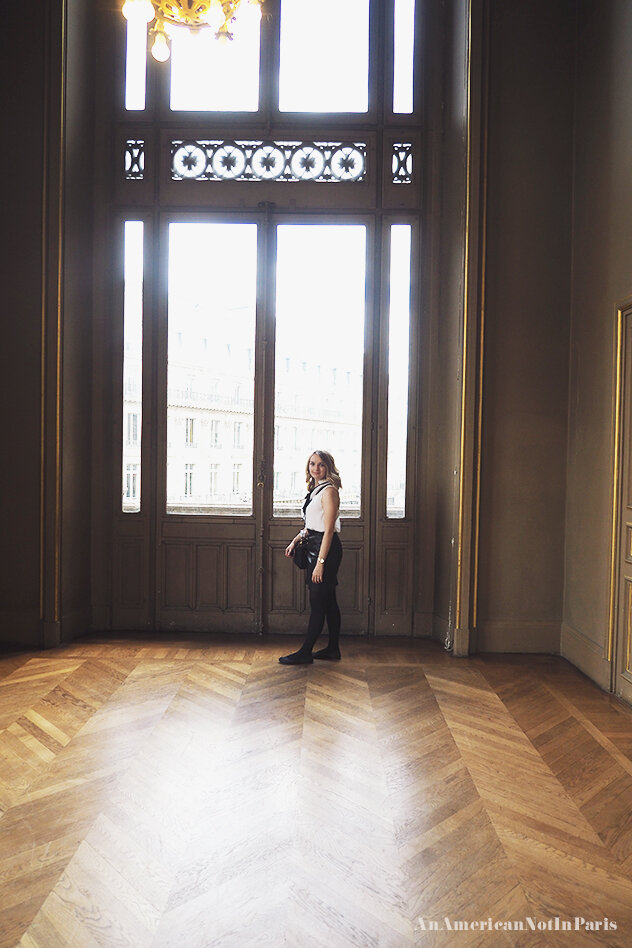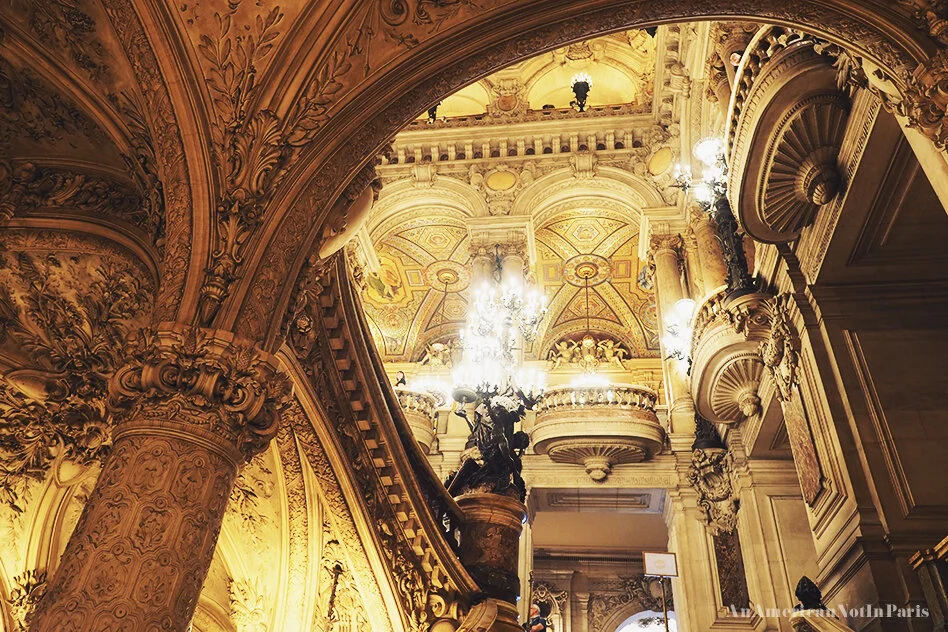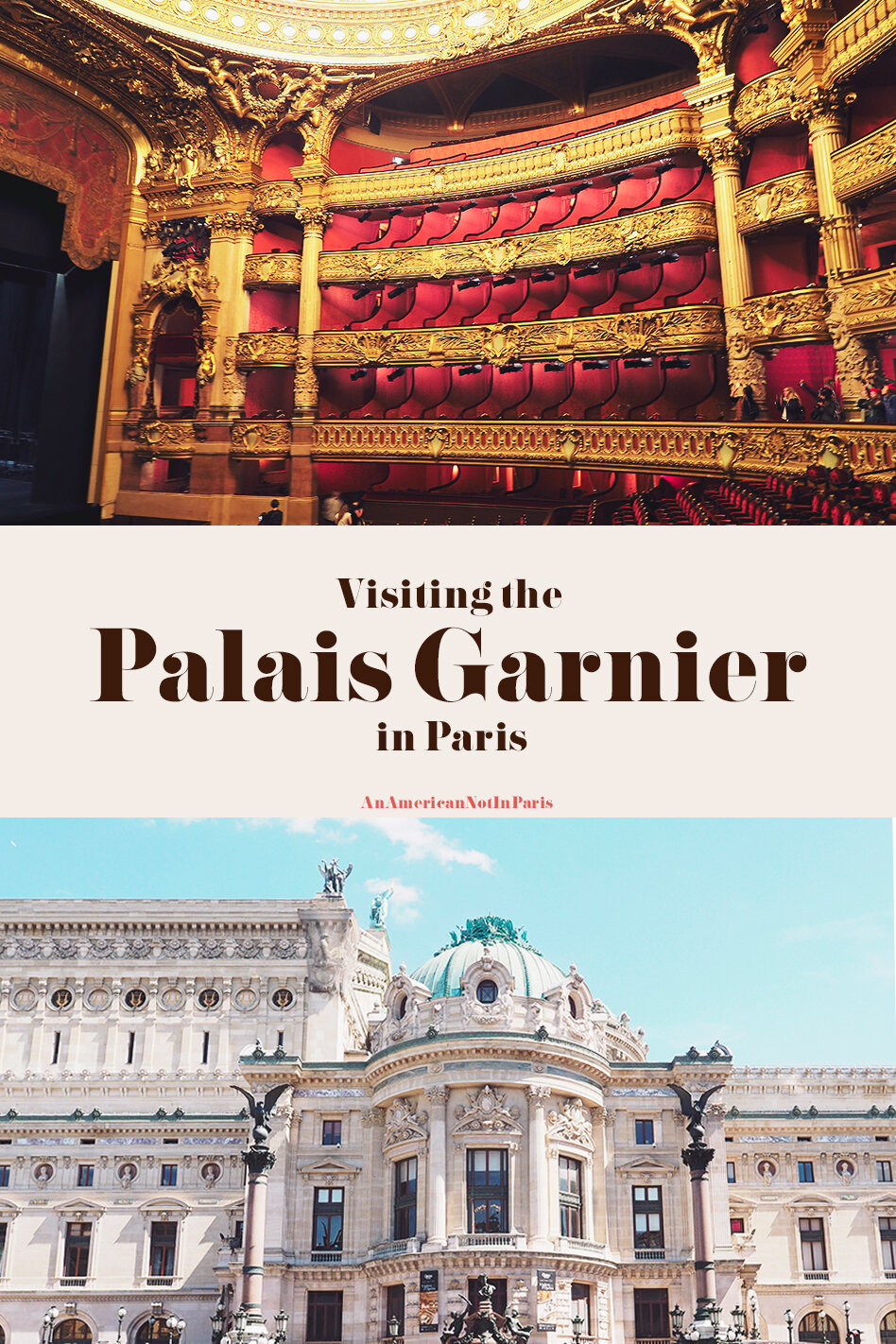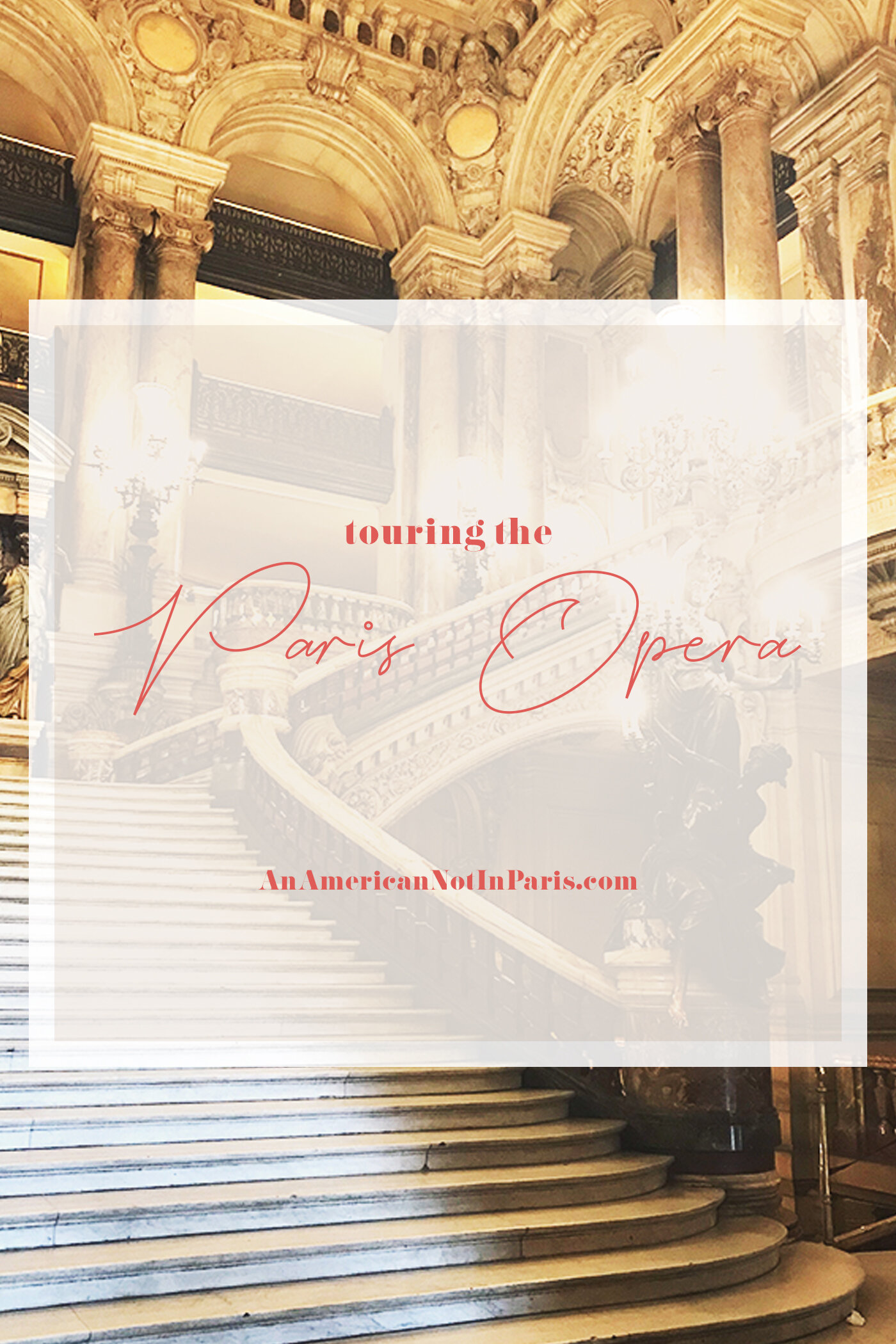Touring the Paris Opera House
Just a note - some of the links below may be affiliate links and I may earn a commission if you purchase through them. Links like these always go to relevant products and services and the commission earned helps keep this blog running.
If you read my 7 Day Paris Itinerary post, then you know one of the highlights of our trip was visiting and touring the main opera house in Paris - the Palais Garnier.
For some backstory - when I was a kid the number one CD I recall being on repeat in my house was an Andrew Llyod Webber Best of Collection and my favorite tracks were from The Phantom of the Opera. I would run around the grocery store at the age of three singing Phantom while other kids were singing Barney and adults were giving my parents strange looks for having a toddler singing complex musical theatre scores. This kicked off my lifelong love of musical theatre and eventually a dual career. I’m a soprano who does Chicago area theatre, as well as working a day job in the advertising field at a musical theatre company, because if you’ve gotta pay the bills you might as well have a 9-5 in an industry you love. Phantom was also the first show I ever saw on Broadway. Christine is my top dream role.
So not only was I seeing the building that inspired the book and eventually the musical, but I was getting a full tour with all the little secrets. Which made this my absolute favorite part of the trip. I talk a lot about tailoring your travels (and Paris especially) to you and this was the most Shannon activity we could have done. You might be reading this thinking “that sounds boring” or “meh the opera house is not on my must-see list” but for me, it was so perfect and so memorable. If you’re so awe-inspired by everything I’m about to tell you, I highly recommend booking this tour yourself next time you go to Paris.
The Basics
The Palais Garnier opened in 1875 and was designed by Charles Garnier (after whom it is named) as a new home for the Opéra de Paris. Both the Opéra de Paris and the Ballet de l'Opéra national de Paris perform in the space as well as in their more modern second home, The Opéra Bastille.
The Palais Garnier welcomes visitors from all over the world not only as audience members for their performances, but also to tour the building and experience the amazing architecture and design.
Address: Place de l'Opéra 75009 Paris
Metro: Opéra and Chaussée d’Antin Metro stops
Touring Hours: 10am to 4:30pm (10am – 6:30pm during summer period) except for certain holidays and special events.
Full price standard admission (self guided): €14 with an additional €5 for an audio guide.
A full guided tour (which is what we did): €17
Accessibility: The Opera House is accessible for those with mobility issues for performances including special seating areas. There is also audio descriptions available for most performances. I was unable to find the accessibility info for the tour, only for those attending performances.
All information is up to date as of writing (November 2019.) As always, be sure to check out their website for the most up to date opening times, information, and special pricing offers for students, etc.
Now that you have all the basics, let’s get to the fun stuff. What we learned on this tour and what made it so special.
The Building
As I mentioned before, the building was designed by Charles Garnier in the mid to late 1800s as a new home for the Paris Opera Company. Information I’ve found out about this varies, but what our tour guide told us was that basically the rich elite in Paris wanted a new opera house that had a secure entrance/exit for their carriages after one of their own was attacked by some revolutionists while leaving the old opera house. You’ll notice the main entrance to the Palais Garnier is covered to accommodate this.
Paris’ hottest social club
The building was completed in 1875 and was the newest social gathering spot for some of the richest people in Paris. A season subscription used to cost more than it does now, because the wealthiest elite did not come to watch the ballet or the opera, but rather to look at all their rich peers and judge/gossip about them! If you’ve ever sat in a box in a theatre, you know they generally have the worst view of the stage, but they were the most desired back then because you could look across and observe what all your rich frenemies were wearing. The performances on stage hardly ever mattered to these people and as such, intermissions would often last for hours so that they could mingle in the grand foyer between acts.
The Phantom
As for the famous book/musical inspired by the venue, Gaston Leroux didn’t need to look far for ideas. The chandelier has never crashed, but a counterweight did once come loose and fall from the ceiling, killing a patron. There is also a body of water (much like the Phantom’s lagoon) under the opera house that was not discovered until ground had already been broken on the building. They unsuccessfully tried to pump the water out, but instead built large concrete walls and structural posts to contain the water. The local fire and police department use it for training exercises to this day. The previous opera house also burned down in 1873 while this one was still in construction, inspiring the famous fire at the end of the book/show. The Palais Garnier even has a sign on Box Number 5 in honor of the fame the novel and the musical have brought the already iconic building.
The Chandelier
Let’s talk about the chandelier because I’m sure you’re thinking “that’s an odd piece of art surrounding it.” There was originally a painting by Jules Eugène Lenepveu encompassing the chandelier that matched the style of the architecture. Before electricity was installed in the building, the chandelier relied on hundreds of candles to bring illumination to the theatre. These candles let off smoke and soot that eventually deteriorated the painting. In the 1960s the company was faced with a choice “restore the painting or install something new” At the time, patronage to the opera had been dwindling, so they commissioned Marc Chagall to create a new ceiling in the hopes it would be a reason to draw people back inside. It worked, because the design is so different people wanted to come see it for themselves and form their own opinions on it. Our tour guide said to this day Parisians are pretty much 50/50 split on how they feel. Some feel it is a modern and cool touch that adds another element to the history while others wish they would remove that and just restore the old one. The old ceiling, by the way, is still up there, just under the Chagall piece. The Opera has a recreation of it in another part of the building that can be viewed by visitors.
The Grand Foyer
The theatre itself only makes up ⅕ of the building. In addition to the magnificent lobby and performance hall, we also saw the grand foyer (inspired by the Hall of Mirrors at Versailles) and several other rooms that were used for socializing by rich patrons. You can now rent these out for events and weddings. Could you imagine having your wedding in such an opulent building?! The Opera House also has many rehearsal spaces, storage rooms, and offices that we didn’t get to view. It was so cool because a few days after this tour, we were able to see this model of the Palais Garneier in the Orsay museum to really get an idea of the scale of this building.
Wooof are you opera house facted out? Because that was just the tip of the iceberg for cool things I learned while taking a guided tour. I highly suggest this activity if you’re ever in Paris if you love history and love beautiful architecture. Next time we visit Paris, I’d love to actually see a ballet or opera while we’re there and snap a few more pics on that staircase.
Related Posts
I’m Shannon!
I’m just a Francophile strolling the banks of the Chicago River (or where-ever my travels take me) instead of the Seine. Trying to find the Parisian life everyday and documenting it here on AN AMERICAN NOT IN PARIS.


